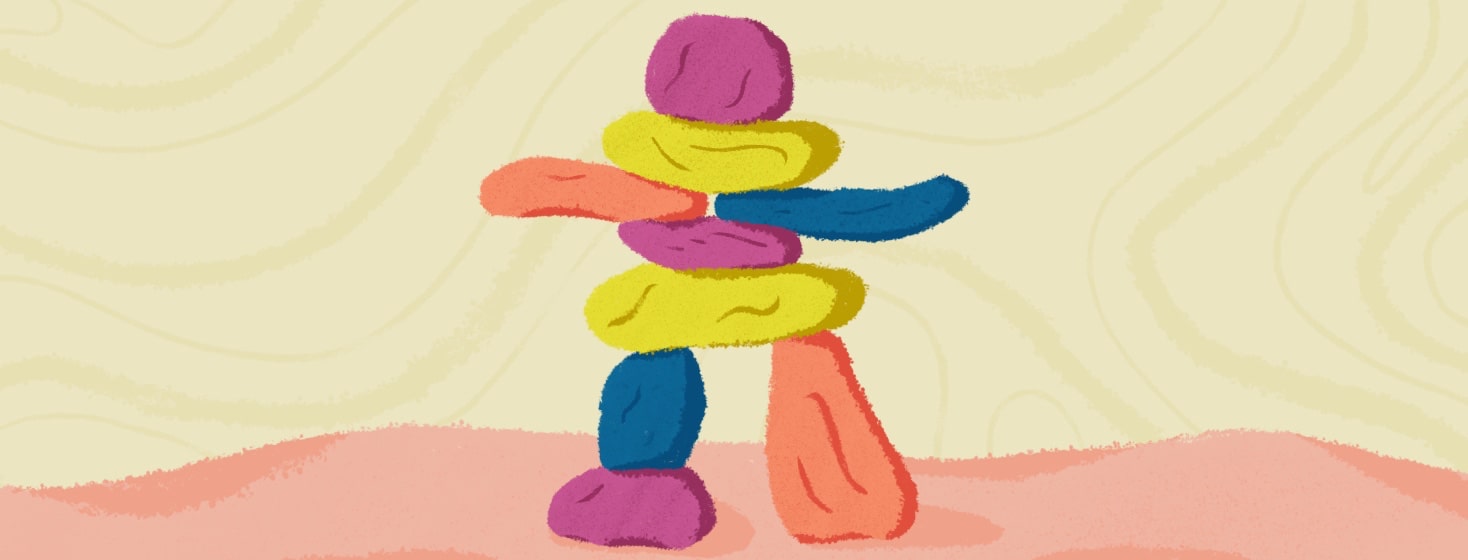Finding Balance in Managing My AS
When it comes to life lessons, it would seem I prefer to learn them the hard way!
This was certainly the case when I decided to try lifestyle strategies to reduce the impact of axial spondyloarthritis. If I could time travel back I would have some great advice for my former self, but of course that isn’t how it works. Thankfully, through much trial and error, my mistakes have left me with important insights into what works best. They are perspectives I now lean into when helping other people with AS in my role as a Health Coach.
The all or nothing approach
When I began trying lifestyle strategies I took the “all or nothing approach.” Having had a disappointing experience with medication and doctors early on, I decided the conventional medical route wasn’t for me. I thought it was a choice between one or the other. And so I left behind medication in favor of strict dietary change.
This was a really difficult path to choose. It involved putting up with a level of pain which in hindsight wasn’t helpful or healthy. In fact, trying to tough it out just made my life miserable. At the same time, the dietary protocols I was experimenting with were really hard on my physical and mental health. They left me feeling isolated, depleted and weak. I did experience some positive results with my symptoms but the changes to my life were unsustainable.
Featured Forum
View all responsesFinding balance
In time I learned I didn’t need to put my body through so much stress and hardship in order to regain my health. The more I focussed on a balanced, whole-person approach, the less I needed to obsess about food, and the better I felt.
These days I incorporate the best of both worlds in how I manage my condition, using lifestyle strategies hand in hand with my doctor’s recommendations.
For me this means doing everything possible to support my general health, from diet to movement to stress management to supplements, alongside medication as needed. I regularly interact with my rheumatologist and make sure any progression is kept in check and medication prescribed as needed. It’s been such a relief to realize I don’t need to stay in pain. And I do so much better at keeping all the balls in the air for my health when my pain is under control.
Slow and steady
Another lesson I’ve learned about lifestyle change is it doesn’t all have to happen at once. I was pretty gung-ho in the past and I would throw myself in at the deep end of whatever strategy I was trying. I wanted to start exercising more as I’d become quite sedentary, so I pushed myself to start with daily 5km walks as well as attending regular yoga classes at the local community center.
These efforts ended in frustration and injury, setting me back and leaving me feeling worse. Looking back now I was setting my expectations far too high and increasing the likelihood of failure. The psychology of behavior change shows the most effective changes are those that accumulate as small steps over time. Starting small is the key to building life long habits; another lesson I’ve had to learn.
Thinking broadly
Finally, one of the most helpful things I’ve discovered over time is to look for answers beyond the specific diagnosis of AS. I used to confine myself to lifestyle strategies that had worked for other people with AS, thinking that anything outside of that was unlikely to make a difference.
As it’s turned out, many of the strategies I’ve found to be really beneficial to me are those recommended to anyone wishing to prevent or reduce chronic illness. Things such as healing my gut, managing stress, working on my sleep and so on have helped my general health which has in turn greatly reduced my symptoms.
Plenty of hiccups along the way but here I am, finally finding a balanced way to manage AS that is working well for me.

Join the conversation